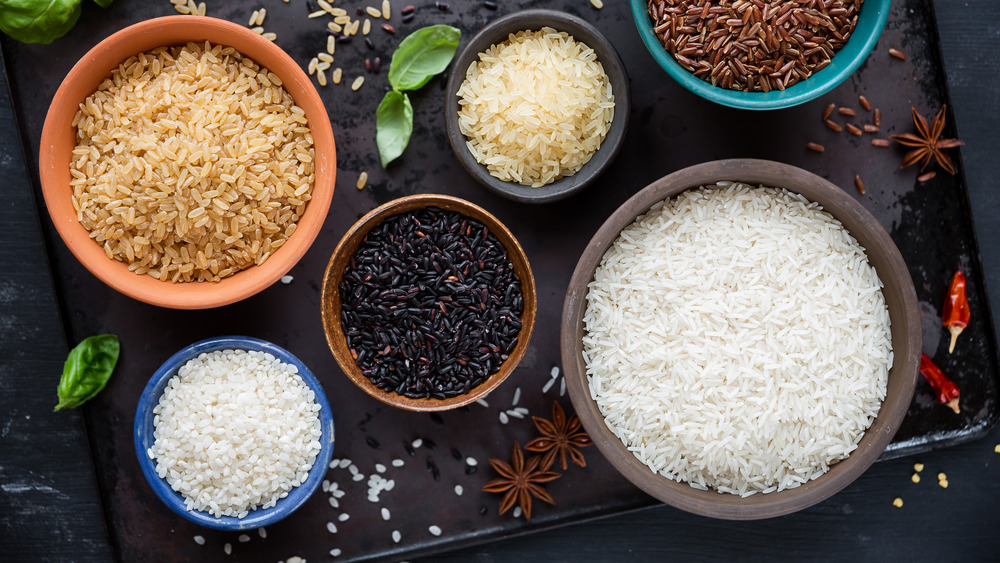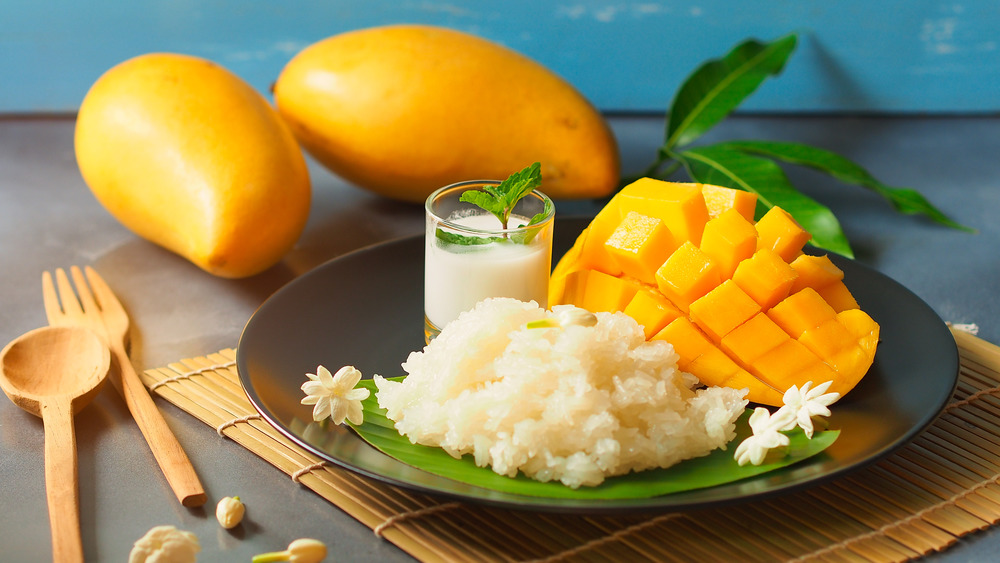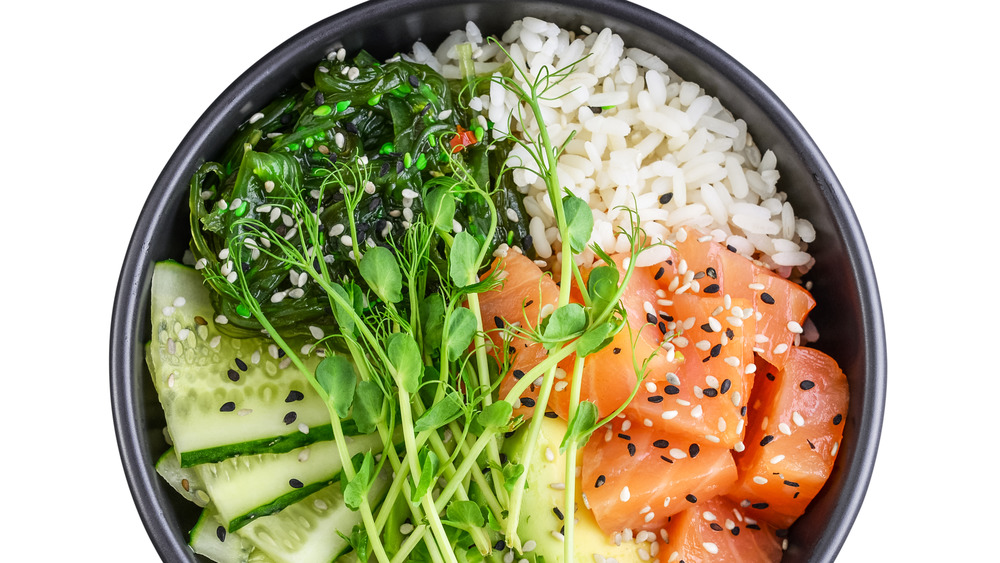The Real Difference Between Sushi Rice And Sticky Rice
Rice is a big deal in many parts of the world – so much so that it is a staple that is eaten several times a day, every day in many cultures. And while there are thousands of different varieties of rice, Serious Eats says the grain's classification is based on the altitude at which it is grown (upland and lowland) and how it is watered (irrigated vs rainfed). Today, 75 percent of all rice grown and harvested is grown in lowlands and irrigated.
Location and water systems aside, Serious Eats also says that there are two different subspecies of rice: japonica, which has short and tubby grains that become sticky when they are cooked, and the indica, whose grains are long and thin, and become dry when cooked. And because they both appear to be short grained and round, some of us might be forgiven for confusing sticky rice with sushi rice and vice versa, but they are not interchangeable and are as different as they can be. Most rice contains two different starches – amylose and amylopectin, and the presence – or absence – of these starches determines how the rice turns out after it is cooked. Rice with more amylose becomes fluffy, and less makes it sticky.
Sticky rice is a versatile ingredient which can be used for savories and sweets
Sticky rice (also called gelatinous rice or waxy rice, per What's Cooking America) might be shaped like sushi rice since both have short grains, but sticky rice has an opaque and chalky white look. The Spruce Eats says sticky rice has no more than 1 percent of amylose and a very high amount of amylopectin, which means the grains become very sticky after the rice is cooked. It's also a bit sweeter than the rice you might know, making it the perfect foil base on which desserts are built, particularly in Asia where the grain is cultivated.
Sticky rice is versatile in that it can be used in savory dishes such as a stuffing for roast duck, and it takes a starring role in desserts including mango and sticky rice, as well as in Chinese dumplings and Japanese mochi (via The Spruce Eats). Regular rice is not prepared the same way as sticky rice is. It needs to be soaked for at least half an hour or overnight, and it is steamed for about 30-45 minutes until the rice is soft and translucent.
Sushi rice is a staple in many Asian households
Like sticky rice, sushi rice holds a membership card with the japonica rice family, but as Cook's Illustrated points out, sushi rice can vary between short and medium grain, which manufacturers don't specify when they're bagging and tagging their rice. Regardless, sushi rice is either labeled as such or called "Calrose rice" and can produce a rather sticky rice dish. But its stickiness is not to the same degree that sticky rice is.
Sushi rice isn't just used for making sushi, it is a true staple in most households that eat rice, and it is used for rice-based dishes from other cultures, including Korea's bibimbap (a dish of white rice topped with rice and vegetables, per My Korean Kitchen) and gimbap or Korean dried seaweed rice rolls filled with a cooked protein; think of a gimbap as a Korean version of the Japanese sushi roll (via Food Republic). Sushi rice is also used to build poke bowls (via Food Network).


